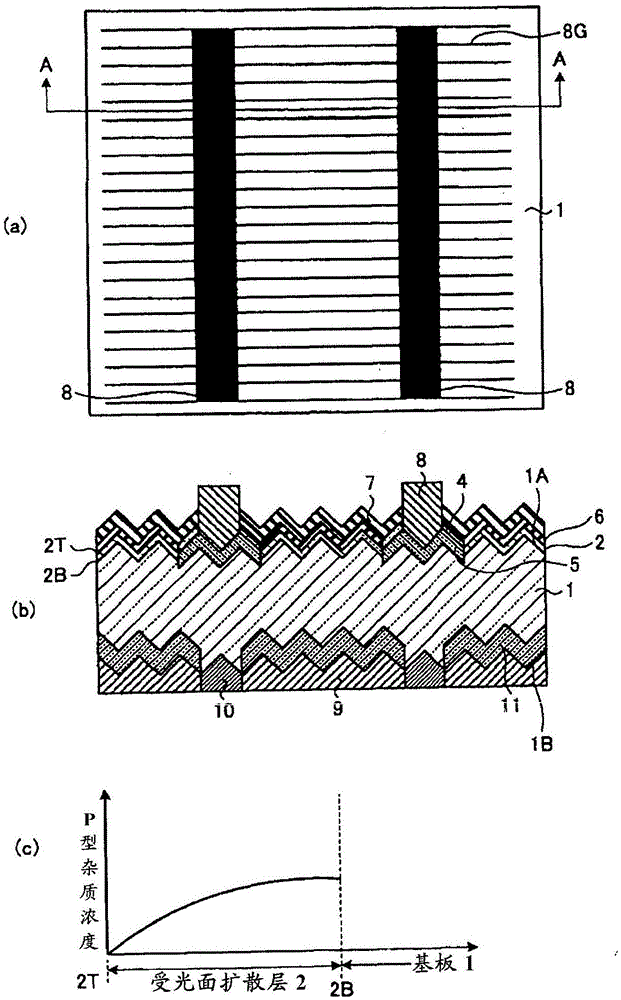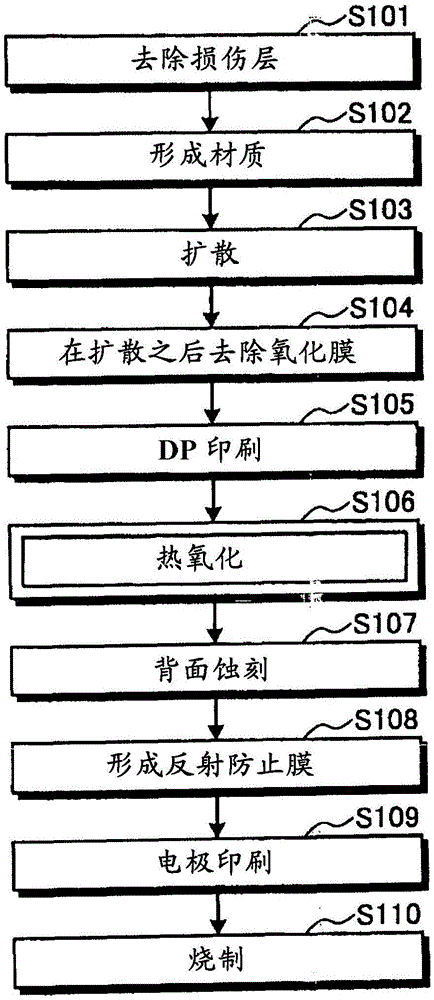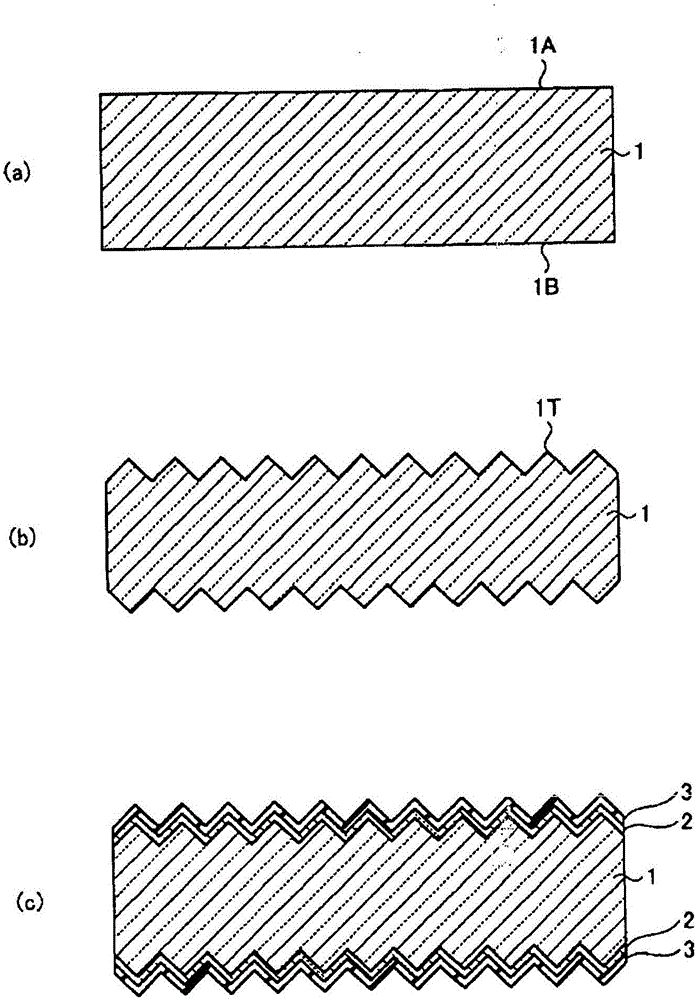Solar cell manufacturing method and solar cell
A technology for a solar cell and a manufacturing method, applied in the field of solar cells, can solve problems such as the complexity of the solar cell manufacturing process, and achieve the effects of low interface reference density, low resistance, and no absorption loss
- Summary
- Abstract
- Description
- Claims
- Application Information
AI Technical Summary
Problems solved by technology
Method used
Image
Examples
Embodiment approach 1
[0035] First, in the method of Embodiment 1, the case where the oxide film formed when the diffusion layer is formed on the entire surface during diffusion and the film formed during selective diffusion during thermal oxidation remains is described. figure 1 It is a figure which shows the solar cell of Embodiment 1, (a) is a top view, (b) is an AA cross-sectional view of (a), (c) is explanatory drawing which shows the density|concentration distribution of the diffusion layer of a light-receiving surface. figure 2 is a diagram showing a flow chart explaining the manufacturing process, image 3 (a)~(c), Figure 4 (a) to (c) and Figure 5 (a) to (c) are process sectional views showing the manufacturing process of the solar cell of the first embodiment.
[0036] In the present embodiment, when the high-concentration diffusion layer 5 is formed on a part of the first surface 1A of the substrate 1 on which the diffusion layer 2 on the light-receiving surface is formed, thermal ox...
Embodiment approach 2
[0051] In the first embodiment, the doping paste 4 is formed after the oxide film 3 formed in the diffusion step (step S103 ) is removed, but in this embodiment, the oxide film 3 is not removed and is left as it is. process. By remaining the oxide film 3 formed during diffusion, a high passivation effect is obtained. Image 6 is a diagram showing the solar cell of the second embodiment, Figure 7 is a diagram showing a flow chart explaining the manufacturing process, Figure 8 (a)~(c), Figure 9 (a) and (b) are process sectional views. like Image 6 As shown, the solar cell of this embodiment is figure 1 The solar cell of the first embodiment is the same as the solar cell of the first embodiment, except that the oxide film 3 remains on the light-receiving surface side. Therefore, description is omitted here, and the same symbols are attached to the same parts. Also in this embodiment, as in Embodiment 1, the thermally oxidized film 6 formed by thermal oxidation for ther...
Embodiment approach 3
[0064] In the above-described first embodiment, the thermal oxide film 6 formed in the thermal oxidation step (step S106 ) is left as it is without being removed, and the backside etching ( S107 ) and the antireflection film forming step ( S108 ) are performed, but in this case In the embodiment, the oxide film 3 formed at the time of diffusion is removed, and the film at the time of thermal oxidation, that is, the thermally oxidized film 6 is also removed, and the case where it does not remain will be described. Figure 10 is a diagram showing the solar cell of the third embodiment, Figure 11 is a diagram showing a flow chart explaining the manufacturing process, Figure 12 (a)~(c), Figure 13 (a) to (d) are process sectional views. The solar cell of this embodiment is figure 1 The solar cell of the first embodiment is the same as the solar cell of the first embodiment, except that the thermal oxide film 6 is not left on the light-receiving surface side. Therefore, the d...
PUM
 Login to View More
Login to View More Abstract
Description
Claims
Application Information
 Login to View More
Login to View More - R&D
- Intellectual Property
- Life Sciences
- Materials
- Tech Scout
- Unparalleled Data Quality
- Higher Quality Content
- 60% Fewer Hallucinations
Browse by: Latest US Patents, China's latest patents, Technical Efficacy Thesaurus, Application Domain, Technology Topic, Popular Technical Reports.
© 2025 PatSnap. All rights reserved.Legal|Privacy policy|Modern Slavery Act Transparency Statement|Sitemap|About US| Contact US: help@patsnap.com



